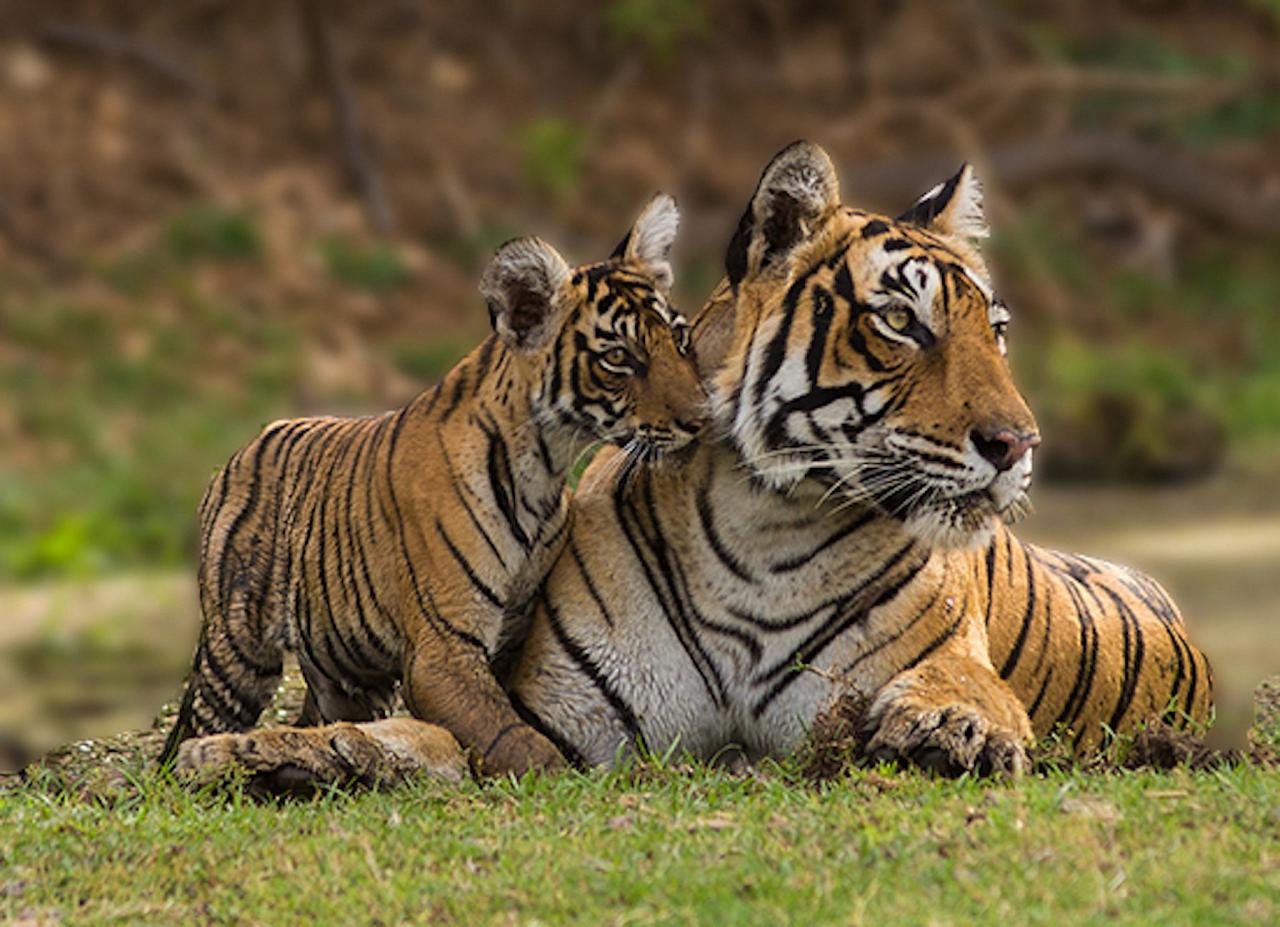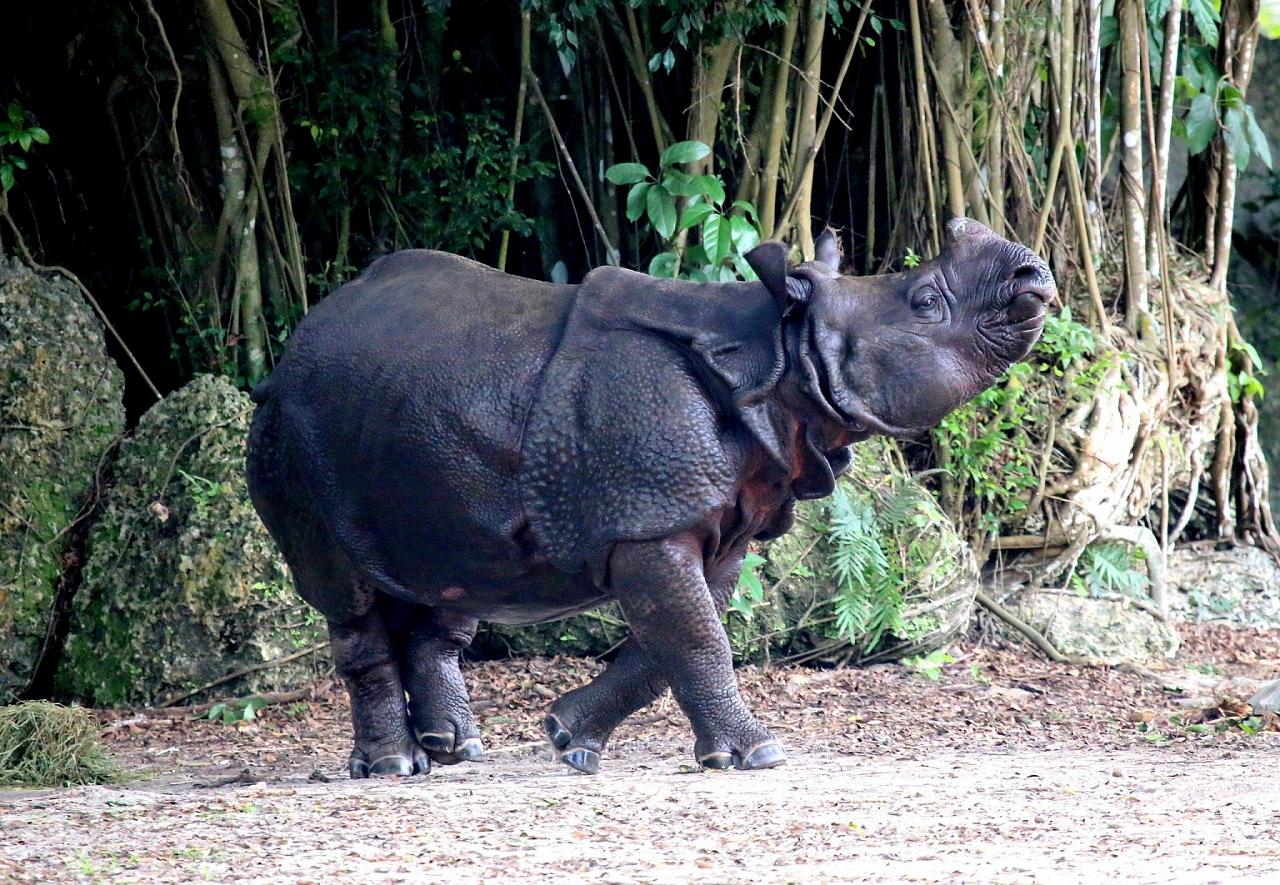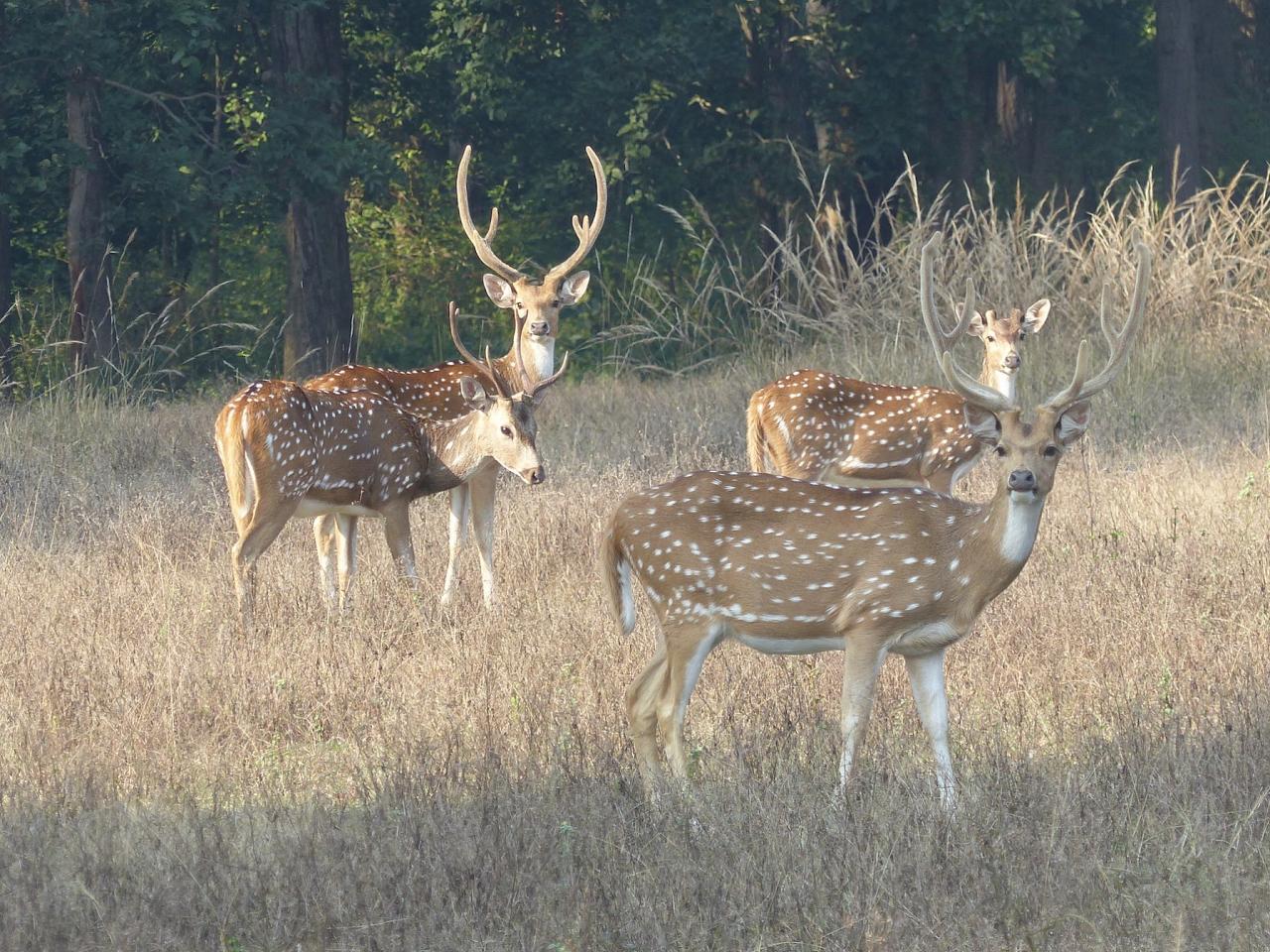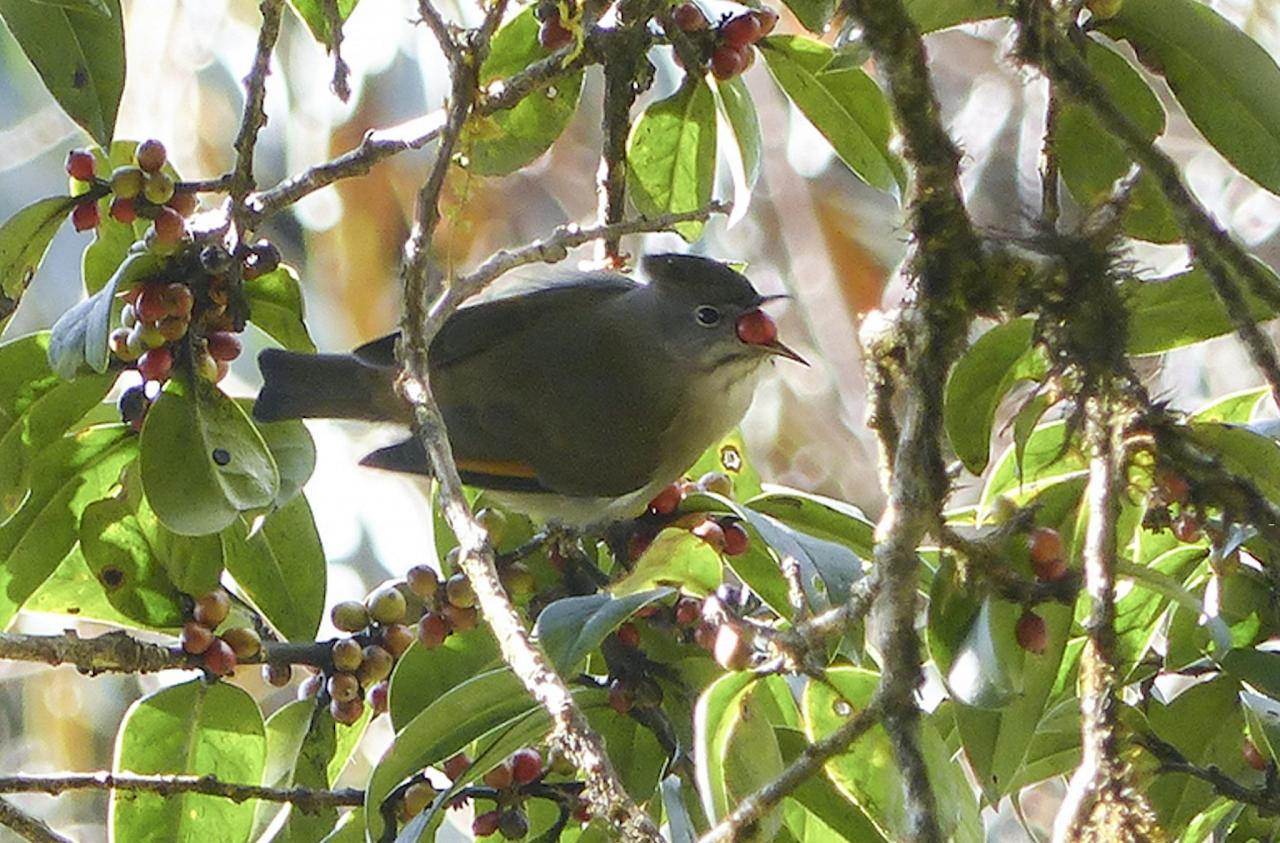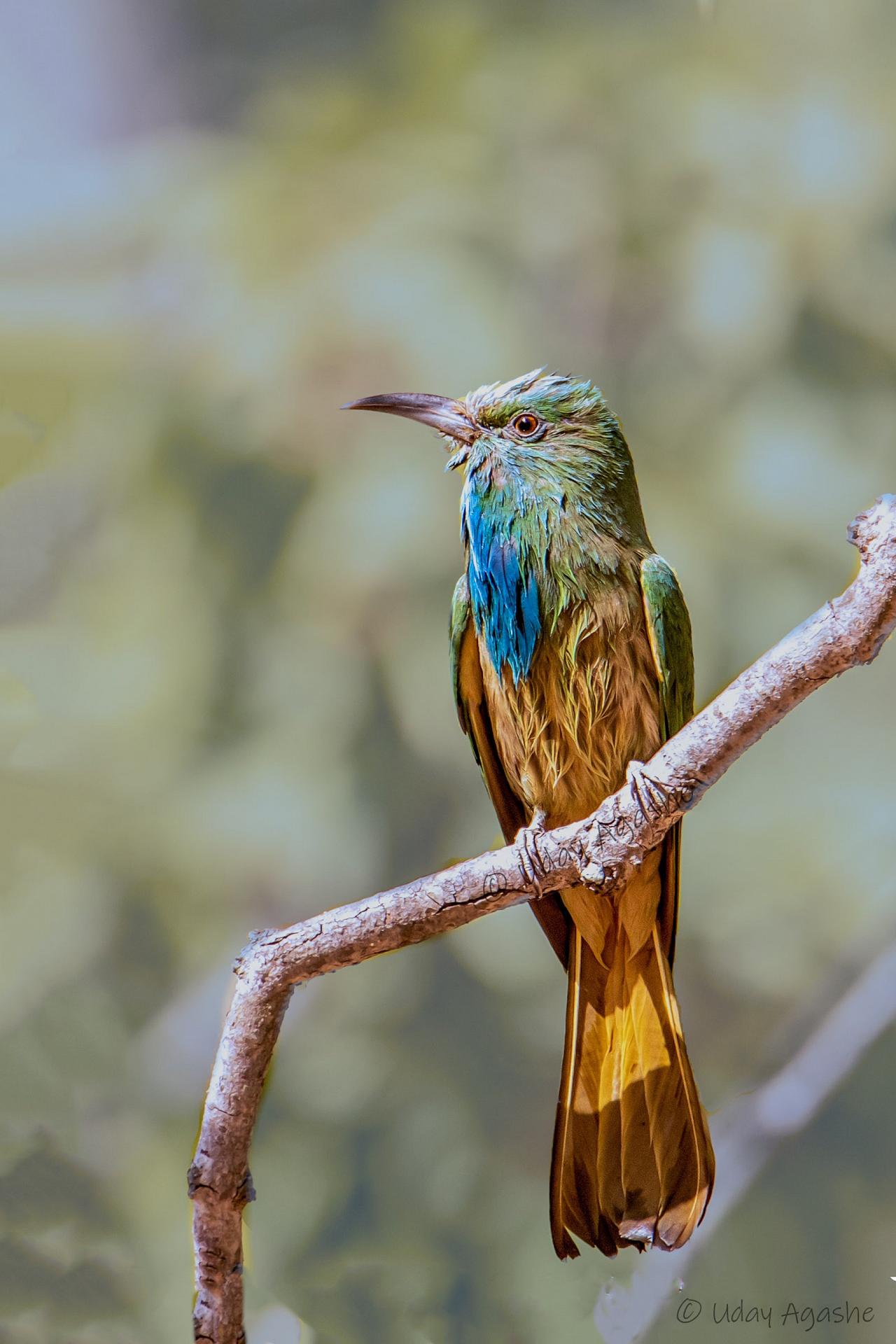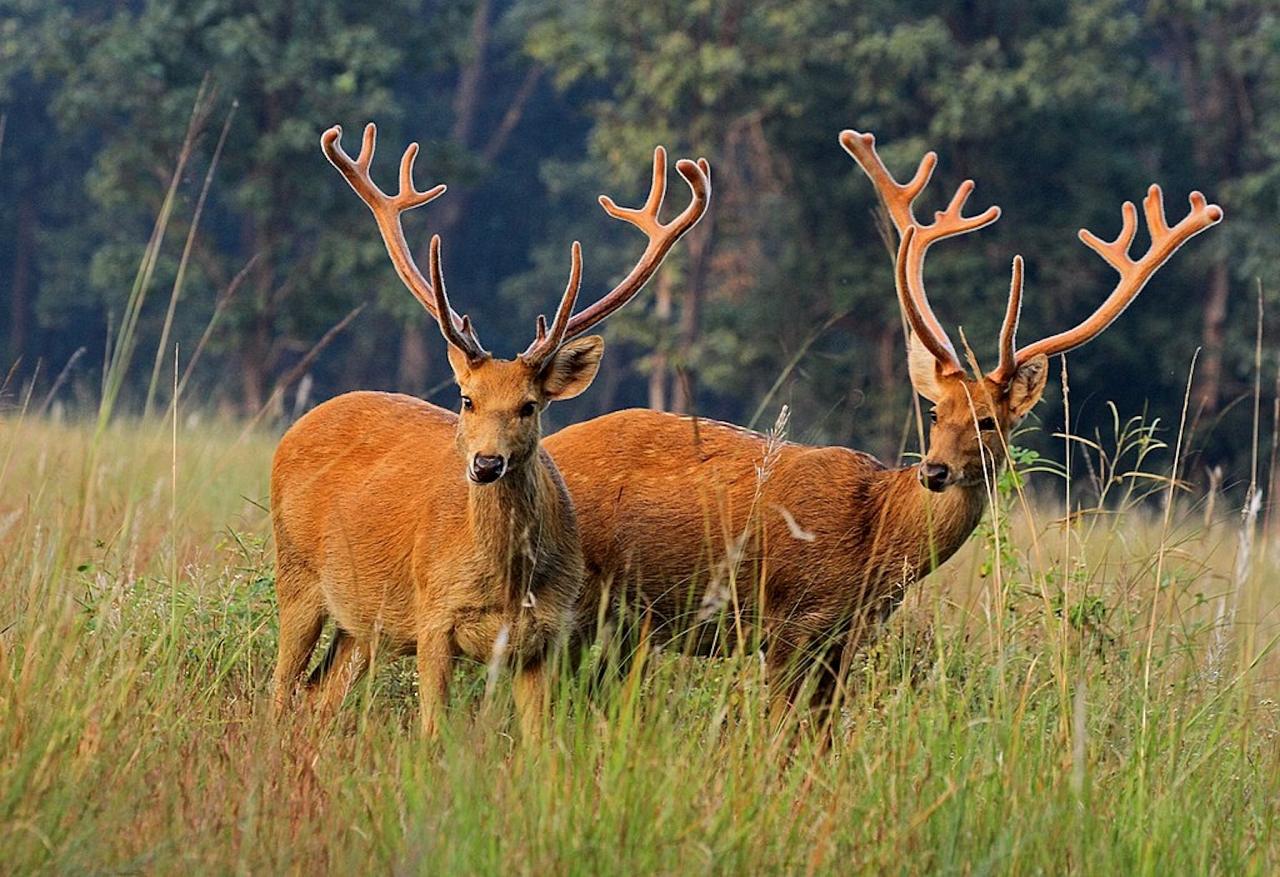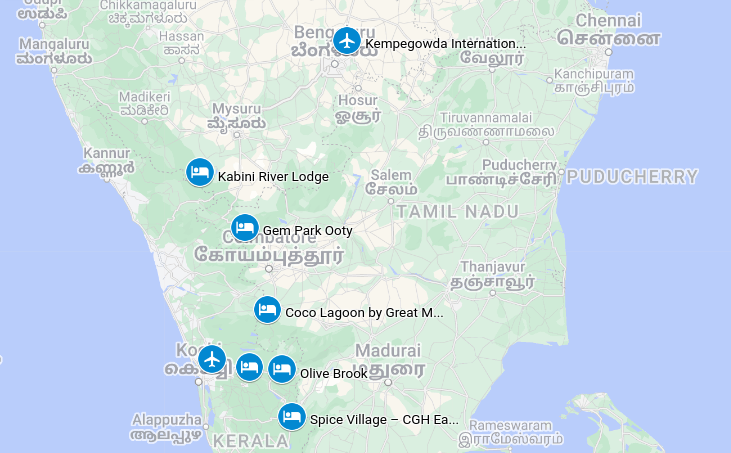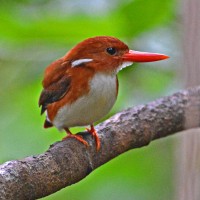- Overview
- Full Itinerary
- Extensions
- Photo Gallery
- Costing
- Travel Details
- Trip Reports
- Guide
- Map
- Know Before You Go
- Other Trips You May Like
On a global scale, India hosts a dizzying array of endemic birds and fascinating mammals. This biodiversity reaches its peak frenzy in southern India’s Western Ghats, often compared to the “Sky Islands” of Southeast Arizona as a haven for naturalists seeking world-famous flora and fauna. Join expert guides and like-minded companions to explore a scenic archipelago of mountains within part of the Nilgiri Biosphere Reserve. Along the way, delight in stunning landscapes and evocative culture, where colorful day-to-day life unfolds. Southern India’s culinary richness is legendary as well!
In Nagarhole National Park, we embark on both boat and jeep safaris to search for elusive Leopard, Tiger, and Indian Elephant. Find Nilgiri Marten, Nilgiri Wood Pigeon, and Nilgiri (Black-chinned) Laughingthrush at Ooty, a resort town with lush tea plantations in the blue hills of the Nilgiris. In Rajamalai National Park admire White-bellied Sholakili and Palani Laughingthrush—just some of the 15 (out of 16) endemic species we should see. Stay two nights inside the Periyar Tiger Reserve, birding with local guides on trails, on the river in a raft, and through the gardens of our jungle lodge. Journey through Thattakad Bird Sanctuary in search of Indian Pitta, Malabar Trogon, Red Spurfowl, and Gray-headed Bulbul, along with Travancore and Indian Flying Squirrel and Slender Loris (with luck!).
And there’s more! We’re excited to offer an optional pre-tour extension with a flight out to explore the Andaman Islands, full of endemics in lush tropical forest, marshes, and sandy beaches. We stay in one lodge, a convenient and comfortable way to acclimate and enjoy these remote islands, one of Earth’s great biological treasures.
Tour Highlights
- Discover a host of Asian and Indian endemics in a scenic region rich in biodiversity
- Experience India’s “quiet side”—Southern India is a delight to travel in, being less congested than more urban areas to the north
- Rest comfortably in air-conditioned rooms, enjoying local and international cuisine
- Explore the Munnar Hill Country area; take quiet forest walks, visit cardamom and spice plantations, and look for endemics like Nilgiri Wood-Pigeon, Nilgiri Flycatcher, Nilgiri Pipit, Black-and-orange Flycatcher, Nilgiri Shortwing, and Indian Blue Robin
- Embark on jeep and boat safaris through Nagarhole National Park in search of Leopard, Tiger, Indian Elephant, and Smooth Coated Otter, alongside a rich array of birds
- Enjoy night walks and spotlighting on drives to find owls and other night animals
- Bird Thattakad Bird Sanctuary for Red Spurfowl, Gray Junglefowl, Malabar Parakeet, White-cheeked Barbet, Malabar Gray Hornbill, Sri Lanka Bay Owl, Sri Lanka Frogmouth, Mottled Wood Owl, and so many more
- Opt for a pre-tour extension to one comfortable lodge in the Andaman Islands, one of the most remote archipelagos of the Indian Ocean, home to an amazing array of high mountain, forest endemic species including the rare Andaman Wood-Pigeon, along with the Andaman Woodpecker and Andaman Shama, Black-naped Oriole, and Forest Wagtail—to mention a few!
Trip Itinerary
Itineraries are guidelines; variations in itinerary may occur to account for weather, road conditions, closures, etc. and to maximize your experience.
Sat., Nov. 7 Arrive in Bengaluru (Bangalore)
Welcome to India! Our journey begins in Bengaluru, also known as Bangalore, the capital and largest city of the southern Indian state of Karnataka.
You are met at the airport and can then rest up at a modern hotel – many flights land first thing in the morning. At dinner, meet your fellow travelers and sample some regional cuisine.
Accommodations at Click Hotel, Bengaluru (D)
Sun., Nov. 8 Bengaluru to Nagarhole Tiger Reserve
This morning, we head for Nagarhole National Park, with a stop at in the Ramanagara Hills for a chance to stretch our legs and start birding. This is a rugged and fascinating geologic area and on striking cliffs we look for Long-billed/Indian Vulture, Jungle Myna, Coppersmith Barbet, Yellow-billed Babbler, Indian Black Robin, Sirkeer Malkoha, White-browed Bulbul, and more.
We continue on as this is mostly a travel day, with stops to break it up with scenery and birding. We pass a large reservoir where a stop may reveal Red-wattled Lapwing, Asian Openbill, Painted Stork, Great Cormorant, Eurasian Spoonbill, and Red-naped Ibis. Our plan is arrive to our lodge adjacent to Nagarhole National Park in the late afternoon, with time to enjoy a boat safari on the river. Settle into your spacious cottages as we head to the dock, we then check fruiting trees and other vegetation along the river. Bright blooms let us have close up views of colorful sunbirds, White-cheeked Barbet, Indian Golden Oriole, Indian Paradise Flycatcher, Oriental Magpie Robin, Blue-throated Flycatcher, and other species.
It is so relaxing to be on the water after our day of travel. On the Kabani River, watch for River Tern, Painted Stork, both Little and Great Cormorants, and possibly our first hornbills – we check all large fruiting trees.
Dinner is served buffet style. Each night there is soup, some delicious breads, a typical fare includes dishes with panner, several vegetable dishes, salad with peanuts, angel hair pasta with sauces, sambal, dahl, a yoghurt sauce, and crispy-fried baby corn. The food here is mostly vegetarian, with meats available such as lamb or chicken. Birds are never far—if we hear a Mottled or other owl, we can readily take a peek!
Accommodations at Kabini River Lodge (B,L,D)
Mon., Nov. 9 & Tues., Nov. 10 Nagarhole Tiger Reserve
Each day, we enjoy two safaris (by jeep driven by local rangers with abundant experience here) in Nagarhole Tiger Reserve, located in the foothills of the Western Ghats or Sayhadris in the southwest corner of India. This lush forest is home to a fantastic array of mammals including Bengal Tiger, a sizable population of Indian Leopard, Jungle Cat, Indian Wild Dog, Golden Jackal, Stripe-necked Mongoose, Ruddy Mongoose, Gaur, Indian Elephant, Sambar, Cheetal, Asiatic Sloth Bear, and the endemic Malabar Giant Squirrel. On past safaris we have seen Indian Wild Dogs and massive Gaur – incredible!
The park’s colorful range of bird species includes Great Hornbill, Malabar Pied Hornbill, Malabar Trogon, and Red Spurfowl along with ever-present Gray Jungle Fowl, Blue-faced Malkoha, White-bellied Woodpecker, Malabar Gray Hornbill, Malabar Lark, Changeable Hawk Eagle, Crested Serpent Eagle, Brown Fish Owl, Spotted Owlet, Jungle Owlet, Little Spiderhunter, Orange-bellied Minivet, Small Minivet, and more. With luck we see one or more of the flamebacks (large and colorful woodpeckers), Indian Nuthatch, or Crested Treeswift.
We enjoy our stay in a beautiful wildlife lodge nestled on the tranquil Kabini River. The property was once a hunting camp for the colonial wealthy; today it is recognized as a conservation property. The dining area with bar overlooks the river and the cuisine includes both Indian and South Indian dishes.
Accommodations at Kabini River Lodge (B,L,D)
Wed., Nov. 11 Nagarhole Tiger Reserve | Masinagudi | Ooty & the Western Ghat Mountains
Early this morning, we depart Nagarhole with our final destination being Ooty, a very famous region for growing the premier tea of Southern India. Birding on the way and enjoying a picnic lunch, we move gradually into the lush Kotagiri Hills in the Nilgiris. Our first stop is Masinagudi, which is a good spot for Spot-bellied Eagle Owl, Spotted Owlet, Jerdon’s Bush Lark, Malabar Lark, and others.
The word Nilgiris (once spelled Nilagiris or Neilgherries) is derived from two Sanskrit words: “nilam” meaning blue and “giri” meaning a hill. Thus, the literal meaning is, "Blue Hills." The origin of the name is apparent to anybody who has viewed the hills from a distance, rising majestically and enveloped in a peculiar blue haze that usually shrouds them. The almost 1000-square-mile Nilgiris District forms an integral part of the Western Ghats.
The whole area enjoys a subtropical temperate climate with moderate temperatures (cool in the mornings and pleasant in the day). The natural vegetation of the valley is typically a dense rather low forest with much undergrowth and many epiphytes and mosses. Both tropical and temperate flora occur here, vegetation being mostly tropical in character at lower elevations and temperate at higher elevations.
We bird in a lovely location with views of the Western Ghats. The easiest way over to Ooty is through a park and only 4-wheel drive local jeeps are allowed to take us, so our patient bus driver goes the long way around with luggage and we get a fun ride up and over the mountains. Ooty feels a bit like Jackson Hole, Wyoming, with a setting unrivalled that tourists and residents enjoy.
A landmark in the hills of Ooty, our charming hotel features beautiful lawns and gardens, fine dining, and a coffee shop. Rooms are a bit dated, but comfortable, and the hotel is quiet and out of the city, the perfect location for our birding.
Accommodations at Sinclairs Retreat Ooty (B,L,D)
Thurs., Nov. 12 Ooty Plateau | Western Ghat Mountains
We have a full day to explore the Ooty Plateau. The peaks of the Western Ghats range host a unique form of tropical montane cloud forest known as Shola, a natural matrix of forests and grasslands. The Shola habitat is restricted to the highest elevation zone and is characterized by high rainfall, humidity, and low temperatures relative to lower elevations. A variety of endemic taxa are exclusively found in this habitat. These species often have disjunct distributions across the Western Ghat mountain-tops, which have been likened to “islands” of specific habitat and microclimatic conditions in an “ocean” of surrounding lowland habitat—much like the “Sky Islands” of Arizona.
Out of the 141 endemic plant genera in India, 11 are found in Nilgiris. Endemic fauna that inhabit these forests include the Nilgiri Marten, Nilgiri Wood-Pigeon and the Nilgiri (Black-chinned) Laughingthrush. More common birds also await us, like Black-and-orange Flycatcher, Nilgiri Sholakili, Indian Blackbird, Nilgiri Flycatcher, Malabar Whistling-thrush, and Nilgiri Thrush. Other species here include Indian Black Eagle, Vernal Hanging-Parrot, Hill Swallow, Indian Blue Robin, Blue-capped Rock-thrush, Jerdon’s Leafbird, Square-tailed Black Bulbul, Bar-winged Flycatcher-shrike, Indian Yellow Tit, Tytler’s Leaf-warblers, and sometimes Kashmir Flycatcher.
Accommodations at Sinclairs Retreat Ooty (B,L,D)
Fri., Nov. 13 Ooty | Western Ghat Mountains | A Delightful Farm Stay at Pollachi
Right next to our hotel there is a lovely forest walk, easy but very productive. We hope to find Indian Scimitar-Babbler, Nilgiri Laughingthrush, Niliiri Sholakili, and perhaps Indian White-eye, and Indian Blue Robin. We walk a quiet road next to the hotel, have a quick bite, and then depart for Pollachi. We have a scenic drive of about four hours as we wind our way south to another section of Sky Island ranges, descending into an agricultural valley and then back up into mountains. The dry deciduous forest and scrubland along the way are host to the White-bellied Minivet. Other interesting birds include the Red Spurfowl, Blue-faced Malkoha, White-naped Woodpecker, Malabar Lark, Indian Pygmy Woodpecker, Blue-bearded Bee-eater, Indian Nuthatch, and more.
We stop for birds, coffee, and snacks along the way. Our local guide finds the best stops for snacks and fun, letting us sample a bit of rural life. You simply MUST try Ooty Varkey biscuits!
On arrival, we check into our cottages, nestled in a clearing surrounding by natural forest. If time permits, we enjoy some afternoon birding for a short duration in a nearby scrub forest/farmland area looking for birds like Yellow-billed Babbler, Tawny-bellied Babbler, Brown-headed Barbet, Indian Gray Hornbill, Indian Black Robin, White-browed Bulbul, and Gray Francolin.
This is a very special place, a private farm that welcomes tourists. Dinner is served with warm hospitality and you feel more like you are at a special dinner party rather than a restaurant. Large trees are just outside our cabins and with luck we may hear Indian Scops Owl, Mottled Owl, or even an Indian Pitta!
Accommodations at Banyan Tree Farm (B,L,D)
Sat., Nov. 14 Pollachi Farm Stay | Valparai Hill Station | Kerala
We depart Pollachi to enjoy a spectacular drive through the Western Ghats on the way to Valparai. There are some small wetlands fairly close by, and with luck we may spot White-breasted Waterhen, Bronze-winged Jacana, and possibly Watercock. White-throated Kingfisher are almost sure to be there, as well as Indian Pond Heron. A bit further down the road is a larger lake, where we can check for Indian Spot-billed Duck, Gray-headed Swamphen, Yellow-wattled Lapwing, Asian Openbill, and hopefully a real beauty—Asian Green Bee-eater. As not many tourists frequent this area, we may find the locals coming out to watch us as we watch birds, fun!
This is again a spectacular drive through the Western Ghats on the way to Valparai. The road is twisty, with numerous switchbacks, but we take our time and enjoy the grand views, keeping our eyes peeled for birds and other wildlife highlights. We also have the chance to see Elephant, Sambar, and Nilgiri Langur.
We arrive at the lodge in time for birding on the lodge grounds and surrounding areas. We hope to see Rufous Babbler, Wayanad Laughingthrush, Great Hornbill, Black-and-orange Flycatcher, and many others. There are also some special endemic mammals in this area that we might see including Lion-tailed Macaque and Jerdon’s Palm Civet.
Accommodations at Sinnadorai Bungalow or similar (B,L,D)
Sun., Nov. 15 Valparai Hill Station| Chinnar Wildlife Sanctuary| Munnar Hill Station
This morning, we continue to make our way through the Western Ghat Mountains, heading out after breakfast for Chinnar, a wildlife sanctuary where we walk and look for roosting Forest Eagle Owl and other dry scrub habitat birds like the Blue-faced Malkoha, Gray-headed Bulbul, and Jungle Prinia.
We travel then to Munnar, a town and hill station (cool summer retreat) in the Western Ghats. Stunning views overlook thousands of acres of tea and cinnamon plantations, reaching up into remaining pockets of shola forest. Here we search for the rare Tytler’s Leaf Warbler, more common Nilgiri and White-bellied Blue Flycatcher, and Nilgiri Pipit.
Relax at our lodge for the next two nights. Here, beautifully maintained gardens full of flowers offer good birding. The food is one of the highlights of our trip, here in the Kerala region prized for growing spices. Enjoy!
Accommodations at Tall Trees Lodge or similar (B,L,D)
Mon., Nov. 16 Munnar | Eravikulam National Park
The Kerala Region of India is lush and inviting to explore. We are up and out very early this morning to visit the Eravikulam (Rajamalai) National Park. The park has scenic high mountains and provides home to endangered Nilgiri Tahr, a goat-like grazing mammal. This and surrounding areas are great places to also find White-bellied Sholakili, Palani Laughingthrush, Nilgiri Wood-Pigeon, Nilgiri Flowerpecker, and other key birds—if you can take your eyes off the scenery. We also keep our eyes peeled for Hill Swallow and Dusky Crag-Martin.
The Rajamalai Hills in Munnar are part of the Western Ghat Biosphere Reserve, in the northern part of the Southern Western Ghats, an area known as High Ranges. The scenic landscape of High Ranges encompasses the widest and highest reaches of the Western Ghats in Kerala. A variety of habitats include high elevation montane-forests and grasslands, humid and high elevation forests, humid mid-elevation and humid low elevation evergreen forests in the windward side and dry forests in the Anjanad Valley.
The High Ranges are rich in avian diversity with more than 300 species of birds including 15 of 16 Western Ghat endemics. Being part of the “sky-islands,” the shola forests in the hills are home to unique endemic species that are still being researched and documented.
After a full day’s birding we return to our comfortable lodge.
Accommodations at Tall Trees Lodge or similar (B,L,D)
Tues., Nov. 17 Munnar Hill Station | Periyar Tiger Reserve
After breakfast, we head out and down the mountains to our stay for the next two nights in the Periyar Tiger Reserve, staying in a unique forest lodge inside the tiger reserve. Late-morning birding around the lodge is followed by a relaxing lunch.
In the afternoon, we visit the Periyar Tiger Reserve on foot, exploring the forest with the local park ranger, searching for the sometimes difficult to find Wayanad Laughingthrush, Rufous Babbler, White-rumped Spinetail, Malabar Trogon, Heart-spotted Woodpecker, and other interesting species.
Our elegant lodge near the Periyar Tiger Reserve offers a swimming pool, lovely gardens, quiet rooms, fine dining, and a spa where you can book one of the therapies that Kerala is famous for. Chefs take great pride in locally sourced foods, including their own organic gardens.
Accommodations in The Niraamaya Retreat (B,L,D)
Wed., Nov. 18 Periyar Tiger Reserve Jeep & Boat Safaris
Today we start birding from the lodge and then drive into the sanctuary. Once on the other side, we explore on foot until midday, looking for special local species including Great Hornbill, Black Baza, Brown-cheeked Fulvetta, Bay Woodpecker, Greater Flameback, Gray-fronted Green Pigeon, Besra, Vernal Hanging-Parrot, Brown Fish Owl, White-bellied Treepie, Forest Wagtail, Little Spiderhunter, Loten’s Sunbird, and Yellow-browed Bulbul.
If there is interest, we can visit a spice farm as we are in a prime region for growing them. It is fun and educational with great tasting treats and a little “retail therapy” available.
In the afternoon we may take a boat ride and from the boat we hope to see Indian Elephant, Gaur, and with some luck, Dhole, also known as Indian Wild Dog. We return to the lodge for some birding and may see India Pitta, Malabar Gray Hornbill, Indian Scimitar Babbler, and others. As it get dark we can try for Jerdon’s Nightjar, Oriental Scops Owl, and Indian Scops Owl.
Accommodations at The Niraamaya Retreat (B,L,D)
Thurs., Nov. 19 Periyar Tiger Reserve | Thattekad Bird Sanctuary
We depart early this morning for a half-day drive to Thattekad Bird Sanctuary with birding stops enroute. This is a famous area for birding in India with a lot of history and intrigue. It is home terrain of one of the local guides we learn so much from. Today’s route winds through a mix of scenic mountains and rural lands, as we wind our way down the Western Ghats. Once we arrive and settle in at Bird’s Murmur Camp, birding is available right outside the door. Our lodge is located on the banks of the river, and from the lodge grounds we start looking for the local garden birds. Dining is covered but open air so you can continue looking at birds while you dine. They keep a cooler stocked with local beer, a welcome treat not that commonly found.
Later this afternoon, we explore the Thattekad Sanctuary looking for Mottled Wood Owl, Sri Lanka Bay Owl, Brown Fish Owl, Spot-bellied Eagle Owl, White-bellied Treepie, Crimson-backed Sunbird, Wayanad Laughing Thrush, Malabar Parakeet, and Malabar Gray Hornbill. We should also find Red Spurfowl, Gray Jungle Fowl, Indian Pitta, Black-throated Munia, and the Gray-headed Fishing Eagle, Great-eared Nightjar, Jerdon’s Nightjar, Indian Nightjar, and even the Savanna Nightjar. Local mammals include Slender Loris (if we are lucky to find this elusive species!), Travancore Flying Squirrel, Indian Flying Squirrel, and Indian Elephant.
Our bird-themed home for the next two nights is the epitome of calm. This is a lovely, permanent tented camp with private bathrooms in each tent. Think safari style, but still with full sized beds, comfy bedding, and relaxation areas. Sitting on the banks of the Periyar River, this is a special place to enjoy birds, mammals, and nature.
Accommodations in The Birds Murmur Camp (B,L,D)
Fri., Nov. 20 Thattekad Bird Sanctuary | Kerala
Spend the day birding in Thattekad with an early morning start, a break for breakfast followed by birding until early lunch. After lunch, birding commences after a break and ends by dusk. In addition to birds, you may also be lucky to see the rare Slender Loris (if you are happy to stay back until it is dark) and a few other mammals.
Thattekkad Bird Sanctuary is the first bird sanctuary in Kerala and is a haven for nature lovers and bird watchers with a wide variety of flora and fauna. Well-known ornithologist Dr. Salim Ali recognized the species richness of this sanctuary during his survey in 1933 in which found about 167 species of birds, now upgraded to 284 species. A total of 39 species of mammals have also been identified at the sanctuary, from elephant to rats, mongoose to otter. Enjoy fine dining, including a celebratory dinner on the last night of our amazing tour of southern India!
Accommodations in The Birds Murmur Camp (B,L,D)
Sat., Nov. 21 Thattekad | Kochi | Fly Out
We depart with a packed breakfast and enjoy a last morning of birding. After one last lunch of fresh local food at the lodge, we depart for the Cochin International Airport (COK) in Kochi. We have a two-hour drive and then you need time for check-in. Please plan flights to depart after 7:00 PM, (anticipated arrival at the airport is 4PM). (B)
Andaman Islands Pre-Tour Extension
Itineraries are guidelines; variations in itinerary may occur to account for weather, road conditions, closures, etc. and to maximize your experience.
This extension is highly recommended, this is one of the most remote archipelagos in the world, with many endemic species, and just a lovely, slow paced and relaxing lifestyle. Our birding there is easy, productive, and a delight! Please read more in recent trip reports!
Mon., Nov. 2: Arrive in Bengaluru
Fly out to the Andaman Islands while you are in India and in range! This stunning archipelago is full of endemics, and a really desirable place for birders to visit. It has lush forests, and we stay at one lodge, so it’s just a really wonderful pre-trip.
Arrive in Bengaluru at your leisure today; you are met at the airport and transferred to the hotel. Your guide greets you at the hotel, answers questions, and lets you know tomorrow’s plans and departure time. Meals today are at your leisure.
Accommodations at Click Vista Hotel
Tues., Nov. 3 : Flight to Port Blair, Andaman Islands
With an early morning start, drive to the Bengaluru airport and connect to our flight to Port Blair and the Andaman Islands. Depending on the flight arrival time, we plan some leisurely birding en route to our overnight stay at Chidiya Tapu. This is a small coastal rainforest at the southernmost tip of the island. Tonight, we have our first taste of night-birding as we search for some of the endemic owls, including Andaman Hawk Owl and Andaman Scops Owl and with luck the Walden’s Scops Owl.
Located just over 1000 miles off the east coast of India, surrounded by the waters of the Bay of Bengal, are 575 islands and islets that make up the Andamans. The Andaman Islands archipelago are in fact the camel backs of submerged mountain ranges projecting above sea level running north to south between the Burmese Arakan Yoma range in the north and of the Indonesian Archipelago in the south and the Nicobars.
These are volcanic islands (the Andaman Islands are home to the only active volcano in the country) with rich, fertile soil. They are home to tropical rainforests, towering Mahua trees on beaches and dense mangroves where forest meets water. The water itself is sparkling emerald and clear, with temperatures of about 82°F, lending itself perfectly to its coral reefs and sea grass beds. In short, what you have is a tropical island paradise, made to trek, birdwatch, snorkel, and enjoy endless beach days.
Chidiya Tapu is at the southernmost tip of South Andaman Island. Surrounded by the sea on three sides, this little peninsula is not too far from the city but cut off from the busy city vibes and is set in a laid-back scenic beach area.
Accommodations in Big Tree Resort or similar (B,L,D)
Wed., Nov. 4 : Chidiya Tapu Trails, Lagoons and Beaches
With a day to explore we visit various sites around Chidiya Tapu, such as the trails inside the biological park and at Bada Baalu Beach. Birds to expect include both Andaman and Crested Serpent Eagles, Pacific Reef Egret, Andaman Treepie, Andaman Drongo, Andaman Green Pigeon, Freckle-breasted Woodpecker, Long-tailed Parakeet, Collared Kingfisher, White-headed Starling, and White-breasted Woodswallow.
Accommodations in Big Tree Resort or similar (B,L,D)
Thurs., Nov. 5 & Fri., Nov. 6 : Mount Harriet National Park
For the next two days, we bird in three to four different locations, exploring different habitats. Prime among these is the evergreen and semi-evergreen forest of Mount Harriet National Park. Almost all the endemics of the island occur here, although the dense habitat means that many are easier to see elsewhere. We hope to see the rare Andaman Wood Pigeon, along with the Andaman Woodpecker and Andaman Shama, Black-naped Oriole, and Forest Wagtail. Night birding is important here and brings several endemic owls, including Andaman and Hume’s Hawk Owls, and Andaman Scops Owl, as well as Andaman Nightjar.
We are of course never far from the sea and visit several wetland and mangrove areas such as Shoal Bay, Sippighat, and Ograbraij. As well as more of the endemics, White-bellied Sea Eagle, Long-toed Stint, Red-necked Stint, Broad-billed Sandpiper, Dusky Warbler, Oriental Reed Warbler, Rusty-rumped (Pallas’s Grasshopper Warbler), Red-throated Pipit, and Eastern Yellow Wagtail are all possible.
Accommodations in Big Tree Resort or similar (B,L,D)
Sat., Nov. 7 : Port Blair | Transfer via Chennai to Bengaluru
After a morning of birding, drive to the airport for an afternoon flight to Chennai, then on to Bengaluru. On arrival, join the rest of the group at a nearby hotel as others join our flock!
Accommodations in Click Hotel, Bengaluru (B,L)
Cost of the Journey
Cost of the journey is $8690 DBL / $10,445 SGL, per person, based on occupancy, from Bengaluru, departing Kochi.
Cost includes all accommodations; all meals as stated in the itinerary; group airport transfers; ground transportation; professional guide services; park, preserve, and other activity fees; and miscellaneous program expenses.
NEW! all tips other than your NJ guide (optional) and local guide are included (this includes tips for your driver, lodge and staff, day activities, meals and other services).
Tour price does not include: roundtrip airfare to Bengaluru and from Kochi, or items of a personal nature such as laundry, telephone charges, or alcoholic beverages.
Cost of the Andaman Islands extension is $3590 DBL / $3950 SGL, based on occupancy, and includes internal flights.
Travel Details
Please plan to make air travel plans only after the minimum group size has been met. We will send you a confirmation email as soon as the trip has been confirmed.
Main Tour Arrival Airport: Kempegowda International Airport Bengaluru (BLR)
Main Tour Arrival Details: Plan flights to arrive November 7, 2026, at your leisure. If you want to join the group welcome dinner, please plan to arrive by 5:00 PM
Departure airport: Cochin International Airport (COK), also called Kochi Airport as it has domestic and international terminals.
Departure Details: Plan flights to depart November 21, 2026, after 7:00 PM
Pre-extension Arrival Airport: Kempegowda International Airport Bengaluru (BLR)
Pre-extension Arrival Details: Plan flights to arrive November 2, 2026, at your leisure
Please check all flight times with us before booking. Naturalist Journeys offers you the service of our travel agent, Exito Travel, to help you book flights. If you wish to extend your time in India, our Indian operator is happy to make suggestions.
Entry Requirements: See "Essential Information" section under the "Know Before You Go” tab.
TRAVEL TIP! If you arrive early, or need a night to transition at the end, our operator can book rooms for you near the arriving or departing airports. For a flight this far, we do always recommend coming one night early if possible, to rest up from your flight. If your flight arrives at dawn, this is in effect a night early. Please remember if so, that you need to book the night before to be able to get into a room (normal check in at hotels is 2-4 PM) so keep that in mind when you make a request.
Browse below for trip reports and species lists from past versions of this and other tours from this destination.
India
- January 2006
- March 2012
- January 2020
- November 2023
- November 2024
- February 2025 (Big Cats)
-
Stephen Grace

Stephen is an award-winning author, natural history educator and conservationist. He has also contributed to documentary films, and his nature photography has been widely published. Over the past two decades, he has introduced groups of travelers to nature and culture in destinations as varied as Uganda, New Zealand and Alaska.
After moving from Colorado to the Oregon coast, Stephen was captivated by the sight of a Tufted Puffin carrying fish back to its burrow, and the first time he heard a Swainson’s Thrush sing, he knew his life would never be the same. He has been studying birds and sharing their beauty with people ever since.
Formative experiences during Stephen’s journey as a naturalist have included tagging along as a teenager with his grandparents in Madera Canyon, where he absorbed their love of Arizona’s sky islands; helping people with different ability levels experience the Yellowstone ecosystem when he lived in Jackson Hole, Wyoming; and sailing aboard a historic schooner to share the wonders of the Salish Sea with students.
Now based in Port Townsend, Washington, Stephen explores the Pacific Northwest by backpacking, paddleboarding, snorkeling, biking, trail running, and skiing. His wide-ranging natural history pursuits include coring trees to count their growth rings, identifying bats by analyzing their biosonar signals, hunting mammoth tusks in Pleistocene bluffs, searching for the elusive Rubber Boa, preserving native prairie, raising awareness about plankton, and leading sea slug safaris.Other trips with Stephen Grace
-
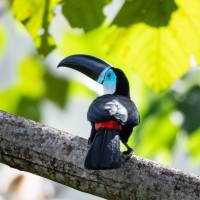 Thanksgiving in Trinidad & Tobago FULL - See our Christmas departure!November 22 - December 1, 2025
Thanksgiving in Trinidad & Tobago FULL - See our Christmas departure!November 22 - December 1, 2025 -
 Christmas in Costa Rica Full! See our other Christmas trips.December 22 - 29, 2025
Christmas in Costa Rica Full! See our other Christmas trips.December 22 - 29, 2025 -
 India: Birds, Tigers & the Taj Mahal FULL - Check out Japan: Birding & Nature!January 27 - February 10, 2026
India: Birds, Tigers & the Taj Mahal FULL - Check out Japan: Birding & Nature!January 27 - February 10, 2026 -
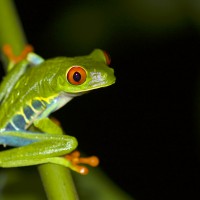 Costa Rica: Birding Across the Continental Divide Arenal Observatory & More! - FULL! See our Monteverde departure in March!February 16 - 25, 2026
Costa Rica: Birding Across the Continental Divide Arenal Observatory & More! - FULL! See our Monteverde departure in March!February 16 - 25, 2026 -
 Best of Guatemala: Birding & Culture FULL! See our March Belize Short & Sweet trip.March 10 - 20, 2026, w/Tikal extension
Best of Guatemala: Birding & Culture FULL! See our March Belize Short & Sweet trip.March 10 - 20, 2026, w/Tikal extension -
 Trinidad & Tobago: Incredible Birds & WildlifeApril 10 - 19, 2026
Trinidad & Tobago: Incredible Birds & WildlifeApril 10 - 19, 2026 -
 Spring in Spain: Birding & NatureApril 22 - May 5, 2026
Spring in Spain: Birding & NatureApril 22 - May 5, 2026 -
 Olympic Peninsula Spring ExplorerMay 11 - 18, 2026
Olympic Peninsula Spring ExplorerMay 11 - 18, 2026 -
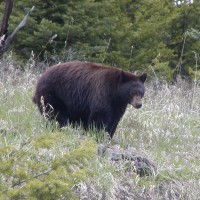 Yellowstone: Birds, Bears & Wildlife Only two spaces left!June 4 - 10, 2026
Yellowstone: Birds, Bears & Wildlife Only two spaces left!June 4 - 10, 2026 -
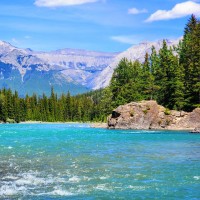 Into the Heart of Canada's Wild RockiesJune 18 - 26, 2026
Into the Heart of Canada's Wild RockiesJune 18 - 26, 2026 -
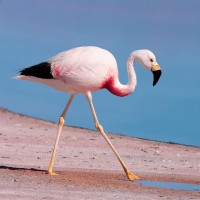 Peru's Avian & Archaeological WondersJuly 10 - 20, 2026, w/Machu Picchu extension
Peru's Avian & Archaeological WondersJuly 10 - 20, 2026, w/Machu Picchu extension -
 Spain: Birds, Bears, Wolves & Total Solar EclipseAugust 3 - 14, 2026
Spain: Birds, Bears, Wolves & Total Solar EclipseAugust 3 - 14, 2026 -
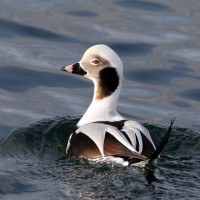 Olympic Peninsula Fall ExplorerSeptember 10 - 17, 2026
Olympic Peninsula Fall ExplorerSeptember 10 - 17, 2026 -
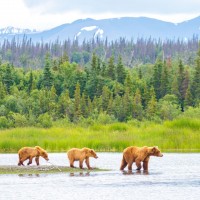 Aleutian Islands Adventure with Dutch Harbor & Kodiak IslandJune 15 - 25, 2027
Aleutian Islands Adventure with Dutch Harbor & Kodiak IslandJune 15 - 25, 2027
-
Essential Information +
Pace & Protocols +
Packing List +
Suggested Reading List +
Useful Links +
Photo credits: Banners: Bengal Tiger (NJ Stock), Indochinese Roller (NJ Stock), One-Horned Rhino in Kaziranga NP (Diganta Talukdar via Creative Commons), Birders (NJ Stock), Sloth Bear (NJ Stock), Sunrise at Kanha Tiger Reserve (NJ Stock), Spot-billed Pelican (NJ Stock), Bengal Tiger (NJ Stock), Sultan Tit (NJ Stock) Tour Highlights Galleries: One-horned Rhino, Naturalist Journeys Stock; Siberian Rubythroat, Avijit Sarkhel; Peacock, Naturalist Journeys Stock; Black-footed Gray Langur, Naturalist Journeys Stock; Women Walking, Naturalist Journeys Stock; Western Ghats Mountains, Naturalist Journeys Stock


